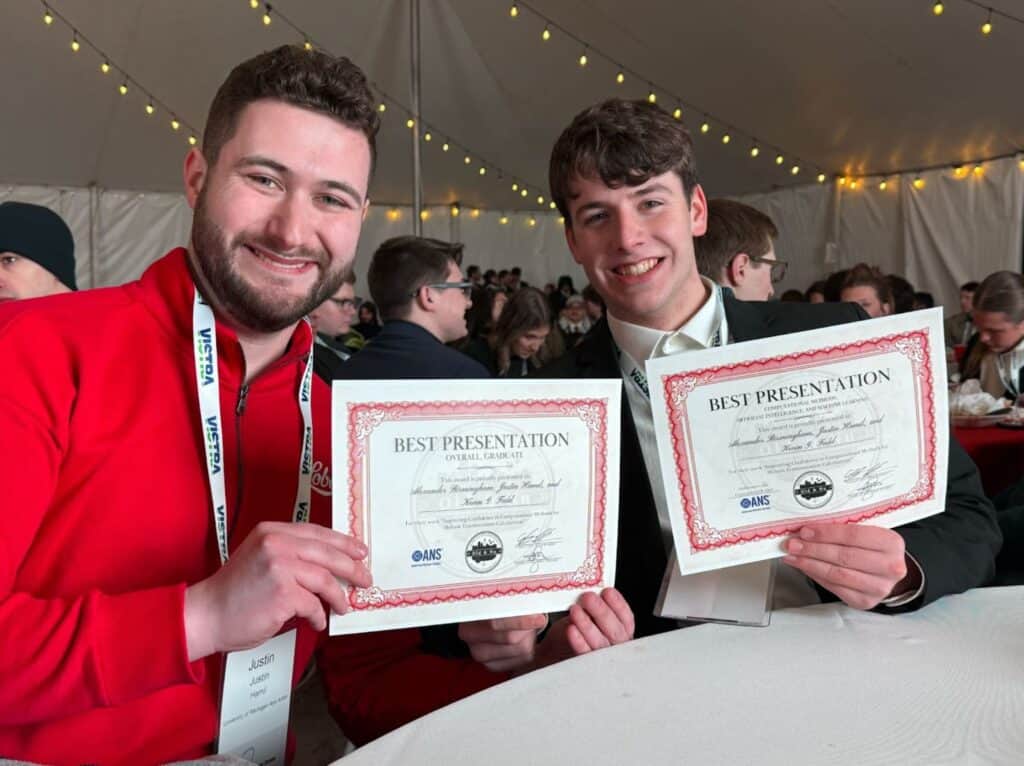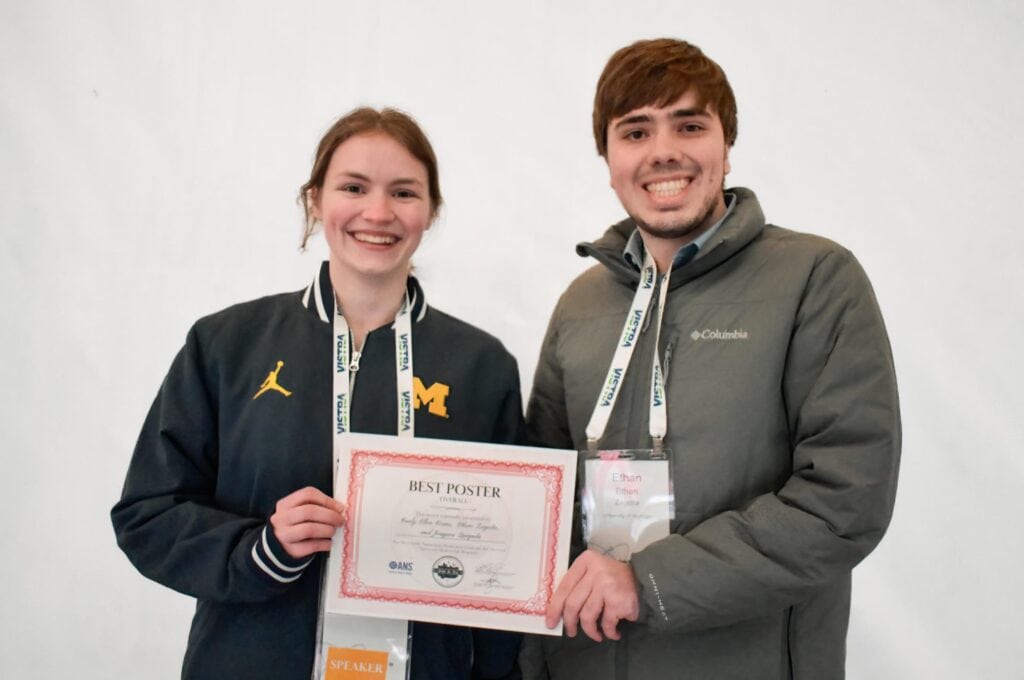
U-M students win top honors at 2025 ANS Student Conference
The students were recognized for excellence in computational methods, radiation detection, and nuclear advocacy at national conference in New Mexico.

The students were recognized for excellence in computational methods, radiation detection, and nuclear advocacy at national conference in New Mexico.
Students from the University of Michigan brought home several major awards from the 2025 American Nuclear Society (ANS) Student Conference, held April 3–5 in Albuquerque, New Mexico. Hosted by the University of New Mexico under the theme Old and Nu, the conference highlighted innovations in nuclear science and engineering while celebrating the field’s legacy.

NERS graduate student Justin Hamil and LSA physics undergraduate Alexander Birmingham, along with NERS professor Kevin G. Field, earned Best Presentation in the Computational Methods, Artificial Intelligence, and Machine Learning track for their work, Improving Confidence in Computational Methods for Helium Transmutation Calculations. The same project also received the prestigious Overall Best Graduate Presentation award, marking it as one of the most impactful contributions of the conference.

NERS undergraduates Carly Ellen Evans, Ethan Zagotta, and Joaquin Quezada were awarded the Overall Best Poster for their research, Innovative Moderator Concepts for Thermal-Spectrum Molten Salt Reactors. Their work explored creative approaches to moderator design that could enhance the performance and versatility of next-generation reactor systems.

In the Radiation Detection and Imaging track, NERS undergraduates Jacob T. Cooper, Bella Greenman, Joseph Brown, and Kaixin Xue won Best Presentation for their collaborative project, 3D Compton Imaging and Multisource Identification of Radioisotopes for an Integrated CZT Detector and Robot. The work combined innovative detection technologies with robotics to improve isotope identification in complex environments.

John Mobley IV, a graduate student with a nuclear concentration in both the Engineering Education Research program in the College of Engineering and the Science, Technology, and Public Policy program in the Gerald R. Ford School of Public Policy, received the Best Paper award in the Nuclear Education and Advocacy track. His paper, Recent Growth in the Establishment of ANS Student Sections, provided an analysis of student engagement in nuclear policy and advocacy through the lens of ANS chapter expansion. John also received the Inaugural ANS Student Sections Committee Community Trailblazer Award.